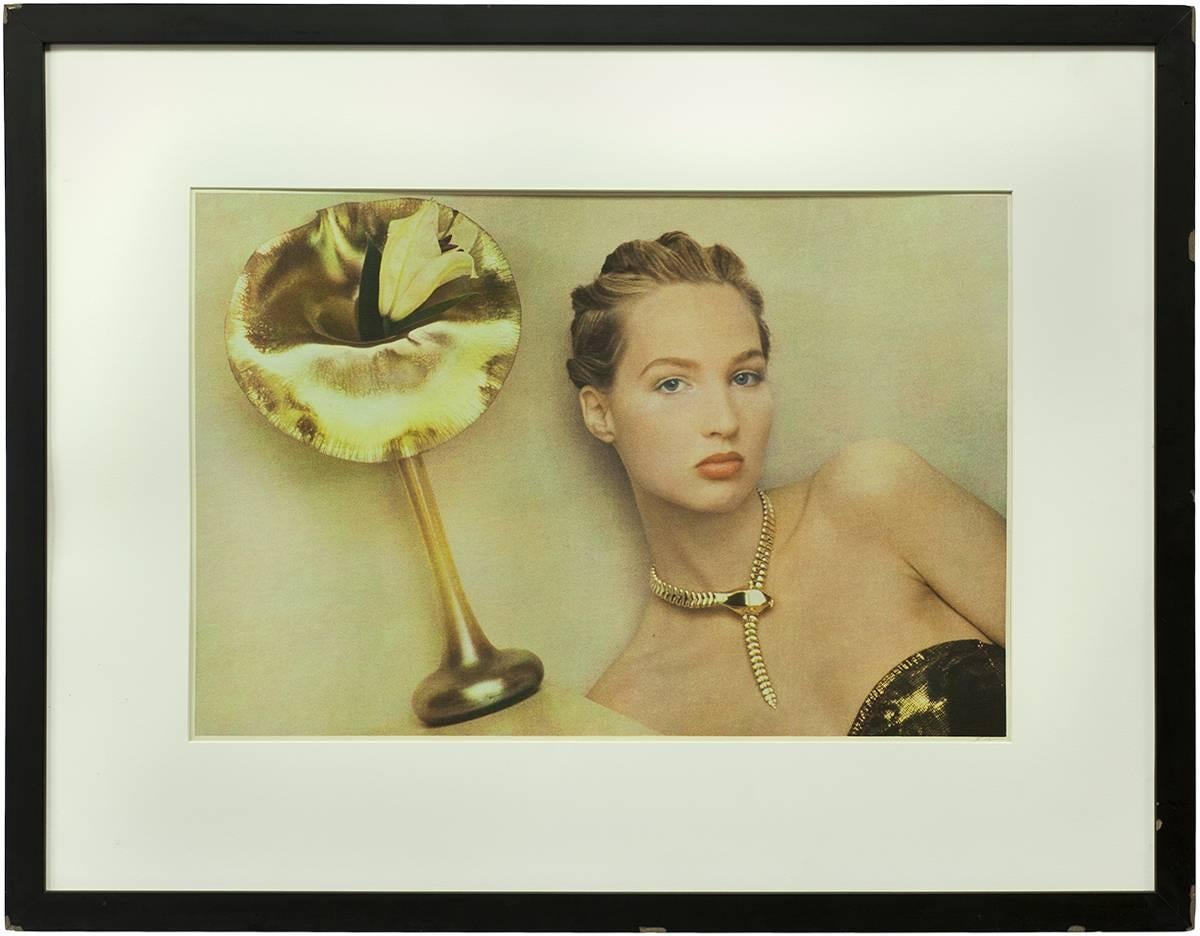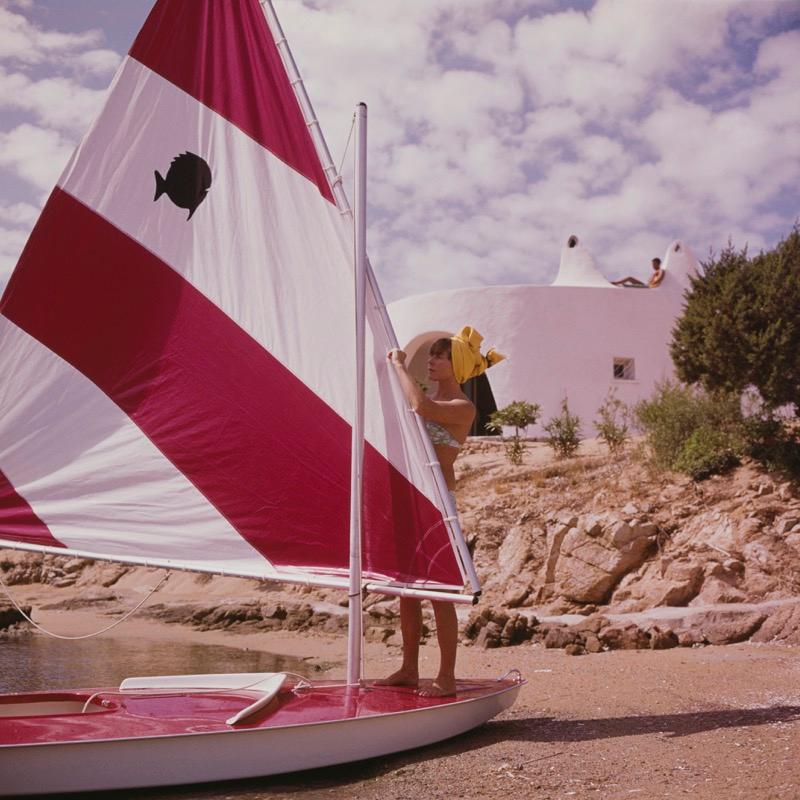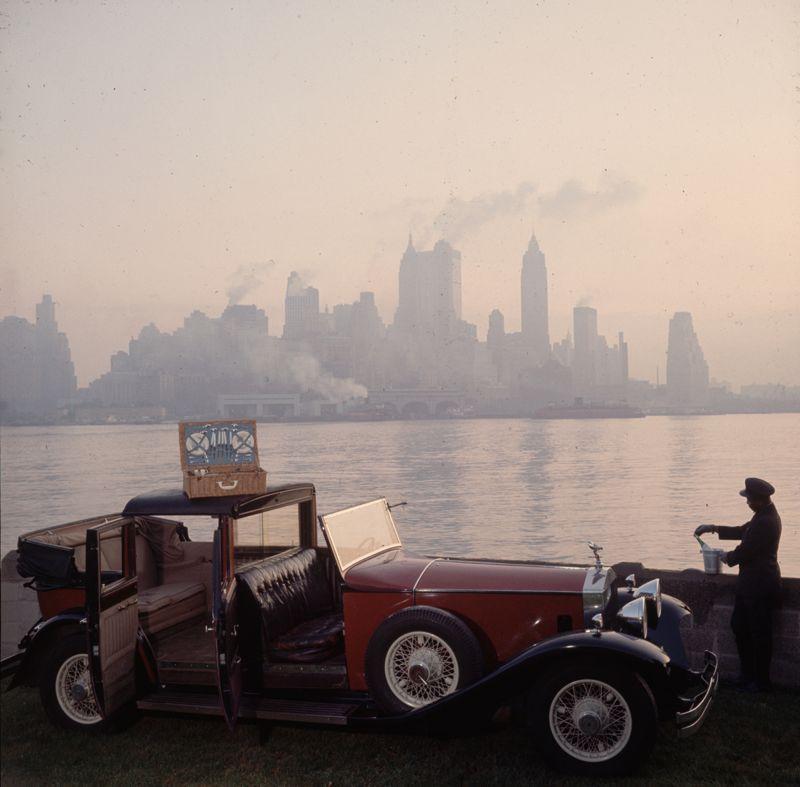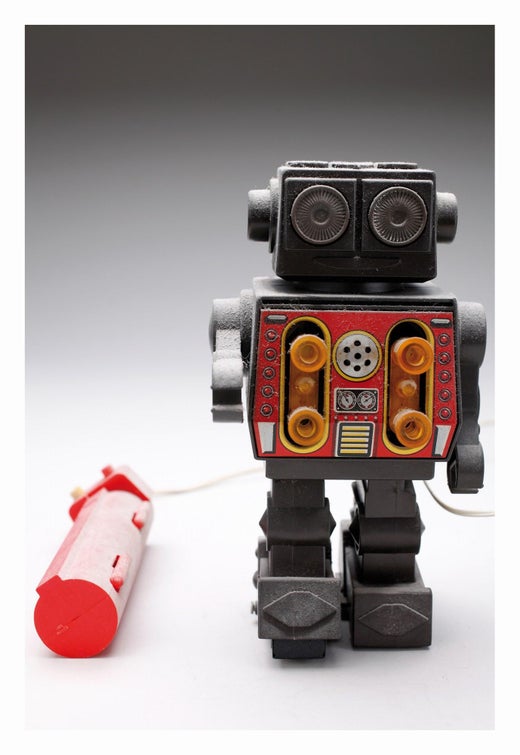Christian RothmannUntitled (from ROBOTNICS Series)2019
2019
About the Item
- Creator:Christian Rothmann (1954)
- Creation Year:2019
- Dimensions:Height: 12 in (30.48 cm)Width: 8.3 in (21.09 cm)
- Medium:
- Movement & Style:
- Period:
- Condition:
- Gallery Location:Kansas City, MO
- Reference Number:
Christian Rothmann
Christian Rothmann is a painter, photographer and graphic artist. In 1976, he first studied at the Hochschule für Gestaltung Offenbach am Main, Germany and moved to Berlin in 1977, where he graduated in 1983 at the Hochschule der Künste. From 1983–95, he taught at the university as a lecturer and as an artist with a focus on screenprinting and American art history. To date, a versatile body of work has been created, which includes not only paintings but also long-standing photo projects, videos and public art. Guest lectures, teaching assignments, scholarships and exhibitions regularly lead Rothmann to travel home and abroad.
- ShippingRetrieving quote...Ships From: Kansas City, MO
- Return PolicyA return for this item may be initiated within 10 days of delivery.
- Untitled (from ROBOTNICS Series)By Christian RothmannLocated in Kansas City, MOChristian Rothmann ROBOTNICS Series C-Print 2019 Edition S (Edition of 10) 12 x 8.3 inches (30.5 x 21 cm) Signed, dated and numbered verso Other Edition Sizes available: - Edition ...Category
2010s Modern Photography
MaterialsC Print
- Untitled (from ROBOTNICS Series)By Christian RothmannLocated in Kansas City, MOChristian Rothmann ROBOTNICS Series C-Print 2019 Edition S (Edition of 10) 12 x 8.3 inches (30.5 x 21 cm) Signed, dated and numbered verso Other Edition Sizes available: - Edition M (Edition of 6) 35.4 x 23.6 inches (90 x 60 cm) - Edition L (Edition of 6) 47.2 x 31.5 inches (120 x 80 cm) - Edition XL (Edition of 3) 88.8 x 58.8 inches (225 x 150 cm) PUR - Price Upon Request -------------- Since 1979 Christian Rothmann had more than 40 solo and 80 group exhibitions worldwide. Christian Rothmann had guest lectures, residencies, art fairs and biennials in Europe, Japan, USA, Australia and Korea. Christian Rothmann (born 1954 in Kędzierzyn, Poland ) is a painter, photographer, and graphic artist. In 1976 he first studied at the “Hochschule für Gestaltung” in Offenbach, Germany and moved to Berlin in 1977, where he graduated in 1983 at the “Hochschule der Künste”. From 1983 to 1995 he taught at the university as a lecturer and as an artist with a focus on screenprinting and American art history. To date, a versatile body of work has been created, which includes not only paintings but also long-standing photo projects, videos, and public art. Guest lectures, teaching assignments, scholarships and exhibitions regularly lead Rothmann to travel home and abroad. ------------------------ Rothmann's Robots These creatures date back to another era, and they connect the past and the future. They were found by Christian Rothmann, a Berlin artist, collector and traveler through time and the world: In shops in Germany and Japan, Israel and America, his keen eye picks out objects cast aside by previous generations, but which lend themselves to his own work. In a similar way, he came across a stash of historic toy robots of varied provenance collected by a Berlin gallery owner many years ago. Most of them were screwed and riveted together in the 1960s and 70s by Metal House, a Japanese company that still exists today. In systematically photographing these humanoids made of tin - and later plastic - Rothmann is paraphrasing the idea of appropriation art. Unknown names designed and made the toys, which some five decades on, Rothmann depicts and emblematizes in his extensive photo sequence. In their photographs of Selim Varol's vast toy collection, his German colleagues Daniel and Geo Fuchs captured both the stereotypical and individual in plastic figures that imitate superheroes which were and still are generally manufactured somewhere in Asia. Christian Rothmann looks his robots deep in their artificially stylized, painted or corrugated eyes - or more aptly, their eye slits - and although each has a certain degree of individuality, the little figures remain unknown to us; they project nothing and are not alter egos. Rothmann trains his lens on their faces and expressions, and thus, his portraits are born. Up extremely close, dust, dents, and rust become visible. In other words, what we see is time-traces of time that has passed since the figures were made, or during their period in a Berlin attic, and - considering that he robots date back to Rothmann's childhood - time lived by the photographer and recipients of his pictures. But unlike dolls, these mechanical robots bear no reference to the ideal of beauty at the time of their manufacture, and their features are in no way modeled on a concrete child's face. In this art project the robots appear as figures without a context, photographed face-on, cropped in front of a neutral background and reduced to their qualities of form. But beyond the reproduction and documentation a game with surfaces is going on; our view lingers on the outer skin of the object, or on the layer over it. The inside - which can be found beneath - is to an extent metaphysical, occurring inside the observer's mind. Only rarely is there anything to see behind the robot's helmet. When an occasional human face does peer out, it turns the figure into a robot-like protective casing for an astronaut of the future. If we really stop and think about modern toys, let's say those produced from the mid 20th century, when Disney and Marvel films were already stimulating a massive appetite for merchandising, the question must be: do such fantasy and hybrid creatures belong, does something like artificial intelligence already belong to the broader community of humans and animals? It is already a decade or two since the wave of Tamagotchis washed in from Japan, moved children to feed and entertain their newly born electronic chicks in the way they would a real pet, or to run the risk of seeing them die. It was a new form of artificial life, but the relationship between people and machines becomes problematic when the machines or humanoid robots have excellent fine motor skills and artificial intelligence and sensitivity on a par with, or even greater than that of humans. Luckily we have not reached that point yet, even if Hollywood adaptations would have us believe we are not far away. Rothmann's robots are initially sweet toys, and each toy is known to have a different effect on children and adults. They are conceived by (adult) designers as a means of translating or retelling history or reality through miniature animals, knights, and soldiers. In the case of monsters, mythical creatures, and robots, it is more about creating visions of the future and parallel worlds. Certainly, since the success of fantasy books and films such as Lord of the Rings or The Hobbit, we see the potential for vast enthusiasm for such parallel worlds. Successful computer and online games such as World of Warcraft...Category
2010s Modern Photography
MaterialsC Print
- Untitled (from ROBOTNICS Series)By Christian RothmannLocated in Kansas City, MOChristian Rothmann ROBOTNICS Series C-Print 2019 Edition S (Edition of 10) 12 x 8.3 inches (30.5 x 21 cm) Signed, dated and numbered verso Other Edition Sizes available: - Edition ...Category
2010s Modern Photography
MaterialsC Print
- Diptychon # 35By Thomas FlorschuetzLocated in Kansas City, MODiptychon # 35 Color photograph Signed, numbered, dated and titled by hand Edition: 12 + III COA provided Thomas Florschuetz (German, born 1960) recently emigrated from East Germany...Category
1990s Abstract Portrait Photography
MaterialsC Print, Archival Ink, Archival Paper
- Diptychon # 34By Thomas FlorschuetzLocated in Kansas City, MODiptychon # 34 Color photograph Signed, numbered, dated and titled by hand Edition: 12 + III COA provided Thomas Florschuetz (German, born 1960) recently emigrated from East Germany...Category
1990s Contemporary Portrait Photography
MaterialsC Print, Archival Ink, Archival Paper
- Diptychon # 30By Thomas FlorschuetzLocated in Kansas City, MODiptychon # 30 Color photograph Signed, numbered, dated and titled by hand Edition: 12 + III COA provided Thomas Florschuetz (German, born 1960) recently emigrated from East Germany...Category
1990s Contemporary Portrait Photography
MaterialsC Print, Archival Ink, Archival Paper
- Rebecca, Tiffany Vase, Large Scale Sheila Metzner PhotographBy Sheila MetznerLocated in Surfside, FLSheila Metzner’s unique photographic style has positioned her as a contemporary master in the worlds of fine art, fashion, portraiture, still life and landscape photography. Looking at Metzner’s photographs is a captivating experience. Innocent, sensual, and sexual, each photo, regardless of subject, exhibits and elicits deep emotion. It is nearly impossible to just glance at Metzner’s photos; they beg to be studied. She says, “Photography in its most basic form is magic…This image, caught in my trap, my box of darkness, can live. It is eternal, immortal. The child in the image will not age as the living child will.” Sheila Schwartz was born in 1939 to an orthodox Jewish family in a poor section of Brooklyn. While attending the School of Industrial Art in Manhattan (now the High School of Art and Design), she was awarded the Mayor Robert F. Wagner scholarship to the college of her choice. She chose Pratt Institute, where she majored in visual communication. Her fondness for painting and sculpture also led her to study with abstract artists Jack Tworkov and James Brooks. After graduating in 1961, Sheila worked as an assistant to Lou Dorfsman at CBS Network Advertising. Five years later, she was hired by the Doyle Dane Bernbach advertising agency as its first female art director, and in 1968 she met and married director, creative director, and painter Jeffrey Metzner. While pregnant with their first child, she was riding in a cab with her mentor and friend, photographer Aaron Rose, discussing whether or not to give up her career in advertising. “He said, ‘You should be a photographer. You live like an artist. You have a good eye, you’d be good at it.’ ” Metzner started taking pictures, amassing them slowly over the next 13 years, while raising her and Jeffrey’s five children—Raven, Bega, Ruby, Stella and Louie. Jeffrey’s two daughters from a previous marriage, Evyan and Alison, were also a regular part of the family. “When they were really small, I’d be with them during the day, photographing and printing at night. At eight or nine in the evening, when they were all asleep, I’d take a shower to wake up and put on high heels and lipstick, which I wore then, to give me the feeling of being ready to work.” She continues, “My children never interfered. When I couldn’t travel because of them, I would find a place in upstate New York and call it Antarctica or Egypt. I found microcosms.” Nine years later, Metzner had accumulated a box of 22 pictures. One of them, a black-and-white photograph titled “Evyan, Kinderhook Creek,” caught the eye of John Szarkowski at the Museum of Modern Art, which he included in his famous and controversial exhibition “Mirrors and Windows: American Photography since 1960.” The New York Times art critic Hilton Kramer loved the picture and soon it became the dark-horse hit of the exhibition. Later that year, Metzner’s first solo show at the Daniel Wolf Gallery in New York drew record crowds. Metzner was now ready to work in color, but not just conventional color. Of her subjects, she once said, “If I use a rose, I want it to be the essential rose—the rose Beauty brought to her father from the Beast’s garden.” Now she aspired to an essential kind of color. “I wanted something that would last. I was looking for Fresson even though I didn’t know they existed.” The Fresson family works outside of Paris and specializes in a labor-intensive four-color “process de charbon” method, which they invented in 1895. Some prints can go up to seven colors, and are pigment prints, the only true archival color print. Metzner is one of just ten American photographers with whom they are willing to work. Fresson prints are the perfect complement to Metzner’s style—soft, sensuous, and grainy, the prints resemble paintings, with a finish which Metzner describes as “a glaze on fine porcelain. The moment I saw the neutral gray,” she adds, “I knew it was perfect.” In 1980 Metzner showed her Fresson color prints at her second solo exhibition at the Daniel Wolf Gallery. This show led to commissioned editorial work for such magazines as Vanity Fair, Vogue, and Rolling Stone. She secured an exclusive contract with Vogue for the next eight years. Metzner considers her portrait of actress Jeanne Moreau for Vanity Fair a turning point in her career. “It gave me a chance to show my work to a broader audience. I wasn’t just producing photographs for the art world.” Of Sheila’s foray into fashion, critic Carol Squiers says, “At a time when fashion photography was caught between sterility and the snapshot, Metzner created a sumptuous vision that stimulated the entire field.” Metzner also started doing commercial photography around this time. Her first client was Valentino, soon to be followed by Bloomingdale’s, Perry Ellis, Revlon, Shiseido, Saks Fifth Avenue, Paloma Picasso, Victoria’s Secret, Levi’s, Ralph Lauren, and fragrances for Chloe and Fendi (the Fendi campaign won a Fragrance Foundation Recognition Award). Her work also appeared on John Mellencamp...Category
1980s Modern Portrait Photography
MaterialsPhotographic Paper, C Print
- Audrey Hepburn Swims - signed limited edition C print 22 of 50By Terry O'NeillLocated in London, GBArtist: Terry O'Neill (1938-) Title of artwork: Audrey Hepburn, 'Audrey Swims', 1966 Technique: C-Print Edition size 22/ 50 only Signature: Certificate O...Category
1960s Modern Portrait Photography
MaterialsC Print, Color
- 'Bettina Graziani' Slim Aarons Limited Edition Estate StampedBy Slim AaronsLocated in London, GBBettina Graziani (1964) Limited Edition Estate Stamped C Type Print (Photo By Slim Aarons) French fashion model Bettina Graziani (Simone Micheline Bodin) (1925 – 2015) adjusting t...Category
1960s Modern Portrait Photography
MaterialsColor, C Print
- 'Grand Day Out' Slim Aarons (1955) Limited Edition Estate Stamped PrintBy Slim AaronsLocated in London, GBGrand Day Out (1955) Limited Edition Estate Stamped Print (Photo By Slim Aarons) Art collector Chester Dale (1883 – 1962) with Charles Prescott Berdell and their wives in Palm Bea...Category
1950s Modern Portrait Photography
MaterialsColor, C Print
- New York Picnic (1959) Limited Estate StampedBy Slim AaronsLocated in London, GBNew York Picnic (1959) Limited Estate Stamped (Photo By Slim Aarons) A chauffeur unpacks a picnic hamper from a Rolls Royce, against the New York skyline. 1952 Additional Info...Category
1950s Modern Portrait Photography
MaterialsColor, C Print
- 'Snowmass Picnic' Slim Aarons Limited Edition Estate StampedBy Slim AaronsLocated in London, GBSnowmass Picnic (1967) Limited Estate Stamped (Photo By Slim Aarons) A stand-up fondue picnic for fashionable skiers at Snowmass-at-Aspen, Colorado which has more than fifty mile...Category
1960s Modern Portrait Photography
MaterialsC Print, Color






